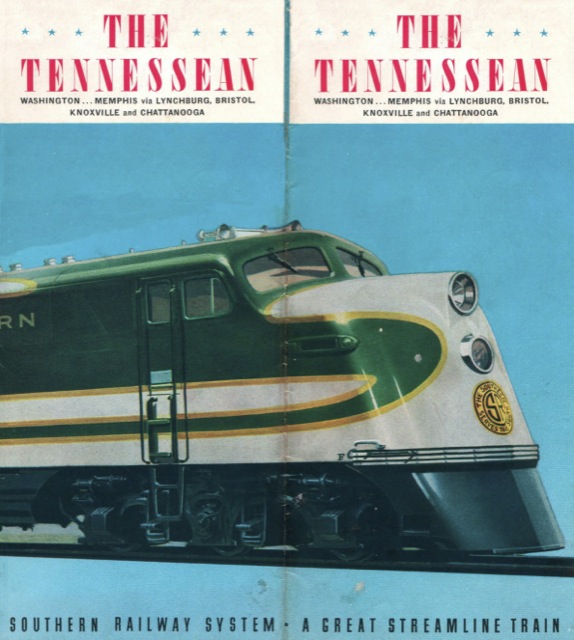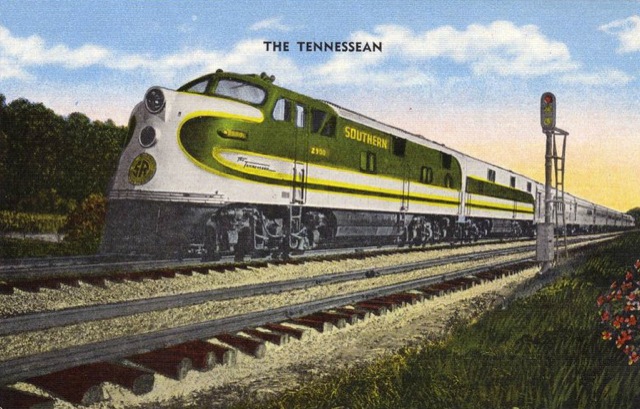I’ve been covering post-war streamliners lately, but here is what I think is a pre-war brochure for a pre-war train. Inaugurated in May, 1941, the Tennessean was a Southern Railway train between Washington and Memphis that also used Norfolk & Western tracks for the 200 miles between Lynchburg, VA and Bristol, TN. Coaches on the train connected at Washington with an all-coach Pennsylvania Railroad train to New York City, while sleeping cars to New York connected with an all-Pullman Pennsylvania train.

Click image to download a 6.7-MB PDF of this eight-page brochure.
The brochure calls the train “the most beautiful train in America,” but it wasn’t even entirely streamlined. Budd built the coaches, baggage cars, diner, and observation cars of stainless steel, but the sleeping cars were heavyweight Pullmans painted silver. Nor was the train very fast, averaging less than 40 mph between Washington and Memphis.
General Motors stylists added plenty of swoops and stripes to the locomotive paint scheme. As illustrated above, the B units of the E6 locomotives appear to be mostly white with green stripes while the A units are mostly green with white stripes. In later years, the Southern would simplify the scheme by deleting the central white stripe in favor of solid green.
The above brochure isn’t dated, but what tells me that it likely comes from before the war is the cover slogan, “A Great Streamline Train.” I’ve noticed that almost all references to streamliners before the war use the term “streamline trains,” while after the war a D is added to become “streamlined trains.” Leaving the D out sounds wrong to my post-war ears, but it would be interesting to know what prompted the change.

